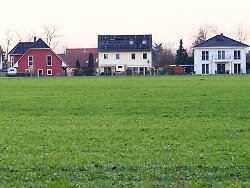Monday 29 March 2021
Biggest increase in house prices
The dream of owning a home is getting more and more expensive
If you want to buy an apartment or a house at the end of last year, you have to put an average of eight percent more on the table than in 2019. Houses in particular are becoming more expensive – including in rural areas. There is less and less social housing for people on low incomes.
The prices for residential real estate in Germany continue to rise: As the Federal Statistical Office in Wiesbaden announced, the prices in the fourth quarter of last year were 8.1 percent above the same quarter of the previous year. Compared to the third quarter of 2020, the prices for apartments and houses rose by 2.6 percent. The trend continues “despite the ongoing corona pandemic,” declared the statisticians.
One and two-family houses in particular became more expensive – both in the seven largest metropolises (plus 12.1 percent) and in sparsely populated rural districts (plus eleven percent), more densely populated rural districts (plus 9.8 percent) and urban districts ( plus 7.0 percent). Condominiums also became more expensive, albeit less clearly than houses. The greatest price increase here was in more densely populated rural districts (plus 8.9 percent).
Less social housing in Germany
For people with low incomes who are dependent on government support, the tense situation on the housing market could worsen in the coming years. The number of social housing in Germany has been falling for years – and according to a study, this trend is likely to continue. Nationwide, the stock will continue to shrink by 2030, according to a study by the consulting firm Bulwiengesa, which specializes in analyzes in the real estate market and reported by “Spiegel”. Among the 26 cities examined, the strongest decline is predicted for Bonn, namely by 60 percent.
According to the study, there was a dramatic decline in some cities between 2011 and 2019. The stock of social housing in Leipzig fell by 90 percent and in Dresden by 89 percent. Many cities have withdrawn from housing subsidies and entire blocks have been sold to investors. In the period in question, only two cities recorded growth, “Spiegel” reported: Münster with 7.1 percent and Mainz with 9.6 percent.
On average, the 26 cities examined had completed three social housing per 1000 inhabitants in the nine years. The front runner was therefore Hamburg with a value of 9.9. Social associations and the German Tenants’ Association have long complained about a blatant shortage of social housing. In February, he gave the tenants’ association the number of apartments that can only be rented with a residence permit at a good 1.1 million. In the 1980s it was almost three million.
.
